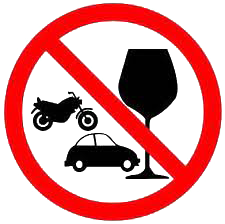
在品味葡萄酒時我們經常探討這瓶酒的口感與香氣是否”均衡”。
酒的均衡度是其品質好壞的指標之一. 香氣的均衡很難以人的感官來理解, 甚至難以作科學分析. 口感的均衡較直接容易感受, 但也相當複雜。
以人的感官而言, 口感與香氣又互為影響, 交互作用。 Professor Emile Peynaud(1912 – 2004)在他的經典名著中以品酒科學的角度探討了這個問題。
口感均衡指的是人類味覺與嗅覺對葡萄酒中甜度與酸度/苦味之間的平衡關係的感受, 特別值得注意的是酒精的味覺作用。 “The taste of wine is for the most part the result of a balance between sweet and sugary tastes and those of acidity and bitterness. … of the substances in wine which have a sweet taste, alcohol is paramount.”[2]
(1) The Balance of Flavors in Dry White Wines
sweetness(alcoholic degree) = acidity
對乾白酒而言, 幾乎沒有殘留糖份, 因此所感受到的甜味主要來自酒精。 來自酒精的甜味平衡了酒的酸度, 酒精同時給于味覺強勁卻又溫暖柔軟的感受。 “Alcohol does not have a chemically neutralizing effect on acidity. Its flavor is complex; it gives both strength and softness, two antagonistic sensations, and at higher alcoholic levels its caustic effect, the impression of warmth which it conveys, counters the effect of sweetness, reinforcing vigor and firmness rather than sweetness.”[2]
(2) The Balance of Flavors in Dry White Wines
sweetness(alcoholic degree + sugar) = acidity
alcoholic degree = sugar
對甜白酒而言, 殘留糖份固然帶來了糖的甜味, 但仍需足夠酒精帶來溫暖與活力。 以一般德國Riesling白酒為例, 清新爽口的酸甜固然是其特色, 如果又可以在低酒精度的條件下作出飽滿圓潤的口感, 應是相當難得的佳釀。 “ .. the richer a wine is in sugar, the richer it needs to be in alcohol, too, in order to appear harmonious. The sickly sweet taste of sugar needs to be compensated by more warmth and vinosity.”[2]
甜白酒可以允許更強的酸度而不另人感到失衡, 例如Sauterns甜白酒一般酸度也允許較高。 當高甜度/高酸度/高酒精度的Sauterns甜白酒作到平衡時, 其口感滋味非常豐富甜美, 實在是人間難得的佳釀。 “ … Dry white wines, being devoid of tannin, can support much higher level of acidity than red wines; … sweet wines can take more acidity than wines without sugar.”
(3)The Balance of Flavors in (Dry) Red Wine
sweetness (alcoholic degree) = acidity + bitterness
多了丹寧等酚類物質(polyphenols)的苦味以及伴隨而來的澀(astrigence)的感覺, 紅酒的整體口感比白酒複雜許多。 值得注意的是, 較少的丹寧允許較高的酸度。 酸度與丹寧有互相加強的作用, 高酸度會使含高丹寧的酒顯得更加艱澀。 高丹寧的酒, 例如Bordeaux左岸, 需要低一點的酸度及高一些的酒精度來使得整體口感顯得均衡。
“The less tannic a red wine is, the more acidity it can support(necessary for its freshness); the richer a red wine is in tannins(necessary for its development and for its longevity), the lower should be its acidity; a high tannin content allied to a pronounced acidity produces the hardest and most astringent wines.”[2]
“A wine tolerates acidity better when its alcoholic degree is higher; acid, bitter, and astringent tastes reinforce each other; the hardest wines are those which are at the same time acid and also rich in tannins; a considerable amount of tannin is more acceptable if acidity is low and alcohol is high.”[2]
“In a good wine, everything should be harmonious; quality is always linked to a subtle play of balances between tastes and smells.”[2]
References:
[1]Emile Peynaud, Jacques Blouin, <>, 1996, Dunod. (法文原著)
[2] Emile Peynaud, Michael Schuster(translation), <>, 1996, John Wiley & Sons, Inc. (英文版)

